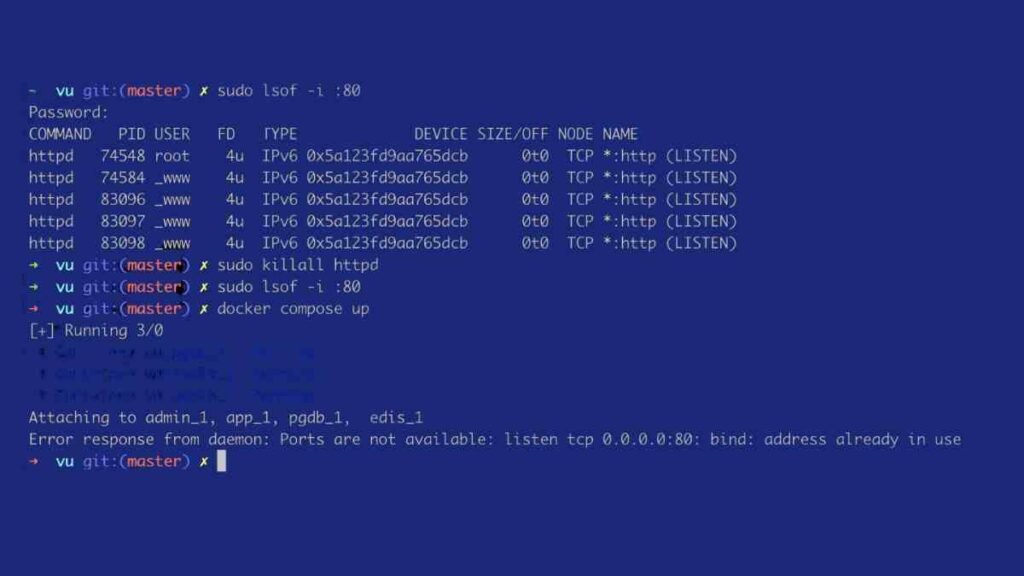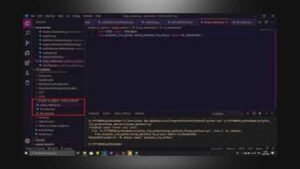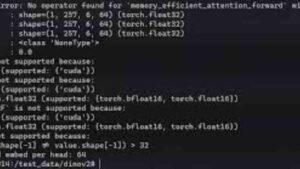WSl2 Flink Rest.Bind-Address 0.0.0.0: Best Practices for Configuration

WSl2 Flink Rest.Bind-Address 0.0.0.0
WSl2 Flink Rest.Bind-Address 0.0.0.0! Should any one have ever ventured to the realm of the ocean of big data processing, chances are you have come about Apache Flink. This may be good enough as it eases the need to be an expert in real time stream processing and the offline batch data analysis. Now, couple it with Windows Subsystem for Linux 2 and you have a super productive environment right on your windows machine.
But wait—there is probably one disadvantage in this highly efficient system. It is configuring Flink to work in WSL2. It includes basic configuration parameters like ‘Rest. Bind-Address’ which might be even the last thing one would ponder about in the configuration process. This configuration might seem trivial; however, this is necessary to ensure that applications run without and additional attempts to make things work later on, and everything runs on the safe side.
How about going one level deeper? Let us also find out the reason why this particular configuration is that important and the best way to do things to avoid being caught unprepared!
WSl2 Flink Rest.Bind-Address 0.0.0.0: Understanding WSL2 and Flink
WSL2, which stands for Windows Subsystem for Linux 2, is the new magic potion to the developers. For the first time in OS history, one can run a complete Linux kernel within a Windows OS. The two operating systems can be used instead of using virtualization.
The Flink structure nicely fits into WSL2. It is an open source framework specific for stream processing and batch data applications. They promise high throughput and low latencies, which is useful for real time analytics.
Drafting and deployment of applications in the WSL2 using Flink is quite easier. You will use the applications on your computer and yet be able to test them in a real Linux environment. Such synergy has resulted in a pregnancy where big data is born and embedded.
Along with these, developers are able to utilize effective functionalities without giving up comfort or performance. These are the details that will affect how well these things will work in different projects.
WSl2 Flink Rest.Bind-Address 0.0.0.0: Why is the Configuration of Rest. Bind-Address Important?
One of the suggestions which is crucial to the proper functioning of the Apache Flink is the configuration of Rest. Bind-Address especially when working in wsl2. It is this setting that governs the communication between the Flink cluster and the outside clients/services.
When you set the address as zero zero zero. Zero it sets up Flink to accept requests from the network through any interface. Such confidentiality is sometimes necessary especially in development environments where many developers are likely to be testing out the applications.
Also, by opening up connections there is always the danger of opening up the service to possible security risks if such risks are not adequately addressed. Some settings should be maintained as to what address can be allowed access in production scenarios.
The appropriate bind address requires low latency and high connectivity at the same time without exposing your architecture or flow of data processes to possible threats. When working on distributed systems such as Flink, everyone becomes a detail freak especially on this aspect. Failure to do as such may have undesirable consequences at some point in the future.
Best Practices for configuring Rest. Bind-Address
It is essential to set the Rest.Bind-Address in Flink because creating an inter-component communication is impossible without this configuration. A good practice established when configuration does not affect performance is to specify this address as 0.0.0.0 meaning that this application can accept requests from any ip address.
Rest.Bind-Address is useful when the Bind Address needs to be limited. For example, in production one sadbound is tempted to only allow localhost. However, in this case exposure to risk is reduced.
One more useful piece of advice applies to the monitoring of any network related configurations within an application after deployment. Various scriptable tools are available to change the configuration and notify you if there are any problems with the configuration.
Do not forget to double check firewall rules as well; they should be compatible with your binding strategy that would allow all the required ports to remain open while any internal contract breaches are mitigated by blocking the open ports.
This is another area where understanding is required and documentation of changes over time will help the team members to understand why and how such decisions were made as well as changing them back if necessary.
Potential Issues with Incorrect Configurations
Poor configurations can cause lots of problems especially with performance and accessibility. One such issue is the inaccessibility of the Flink dashboard from other devices. If Rest.
Bind-Address is not configured properly, the users could be outcasted.
The poor configuration can also cause some security issues. The services can be subjected to unintentional traffic if there is an open bind address through which breaches can occur.
Furthermore, resources being wasted can be as a result of configuration changes that did not cost much. There could be a failure in your job execution because the nodes that usually work together are not able to reach out to each other successfully.
There can also be performance degradation when services are not fine-tuned for their intended settings. Processing times become long and efficiency of operation is distorted as simple errors misconfiguration cause long processing times, such as bottlenecks. Avoiding potential pitfalls as discussed in this sagewise paragraph will go a long way in ensuring that you have a strong setup and minimize the unnecessary pain that may come later.
How to Troubleshoot Configuration Problems
In the event of any configuration issues, the first thing to check is the settings. Compare the values of the Rest. Bind-Address value with the desired one.
First of all check error messages in the logs. Flink gives quite thorough logs that would help you figure out what went wrong. Also pay attention to any warnings or errors that concern network settings.
If the faults remain connect each piece with the others using curl or ping for instance. This ensures that the services are able to reach each other.
There is another useful approach where you perform your setup in an isolated set up. In some cases when one changes the conditions of a task, one is able to fix problems more rapidly.
Feel free to look at the community forum and documentation. A lot of people encountered the same problems and best practices can be provided.
Real-life Examples and Success Stories
The other day, a startup company implemented integration of Apache Flink with WSL2 to improve their data processing capability. They changed the Rest. Bind-Address to ‘0.0.0.0’ in order to enable multiple services communicate through multiple interfaces.
This configuration allowed the group to quickly increase the number of their applications in use while guaranteeing that they remain available. The nature of this configuration allowed them to introduce newer versions of the applications without having to take the system down thereby increasing productivity.
Another company also faced some difficulties with their migration from a classical VM environment to WSL2 which they use to run Flink Jobs. By using the correct value in the Rest. Bind-Address settings, they were able to resolve the connectivity problem that existed between the nodes in their particular cluster.
Their real time analytics turned out to have improved response times and better resource utilisation after the changes were implemented. The above success stories give an insight into how effective configuration can be a step towards achieving operational efficiency as well as growth prospects for an organisation that exploits the use of WSL2 and Flink.
Conclusion
Few systems require optimal settings as much as these do, particularly in such complex systems as WSL2 and Flink. The Rest.
This Bind-Address setting and the configuration settings in general dictate how the services interact with each other. Malicious actions such as misconfiguration can make clients unable to communicate or worse open the application to attack.
Such mistakes can be avoided in the first instance due to regular maintenance. Evaluation of performance indicators makes it possible to be calm for the proper functioning of the entire system. If anything does go wrong, you will always be the first one aware.
More importantly, however, following the given guidance can mean maintenance and optimization of your system. Because of certain things, it’s not just about getting it once; it’s about getting it right every time.
Improper setup and lack of periodic inspection of parameters does behind the huge costs in reliability and peace of mind. Your systems will function more efficiently as you give more attention to this dimension as part of your operational strategy.
FAQs: WSl2 Flink Rest.Bind-Address 0.0.0.0
What is WSL2?
WSL2 means Windows Subsystem for Linux version 2. This is an application which allows the user to work in a fully functional Linux environment under Windows without the use of Virtual Machines or dual booting.
Why is Rest. Bind-Address set to 0.0.0.0 important in Flink?
Setting Rest. Bind-Address to 0.0.0.0 means that any external clients from their computers, as well as external applications like Grafana and Prometheus, will be able to connect to your Flink cluster’s REST interface. This exposes the REST interface, making it easier for external clients to access the Flink cluster.
Can incorrect configurations affect my application’s performance?
Yes, wrongly configured parameters can restrict accessibility or create security threats that could put the application down for a while, and this could, in turn, affect the general performance of the application.
How often should I review my Flink configuration settings?
In particular, after the implementation of changes or updates within your infrastructure and on a regular basis thereafter, these recommendations will assist management in determining whether any configurations require any adjustments in light of the situation at the time.
Where can I find resources on troubleshooting WSL2 and Flink configuration problems?
The official documentation for both WSL2 and Apache Flink contains many detailed instructions on how to troubleshoot such problems as wrong configuration parameters.






